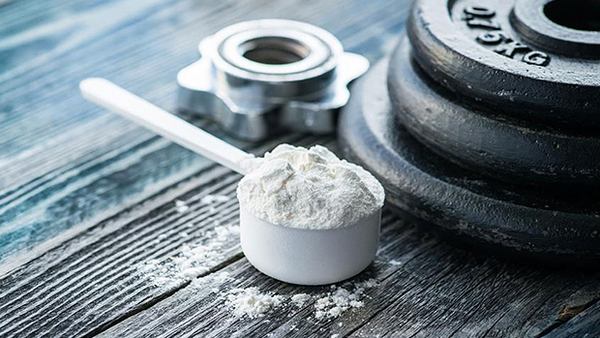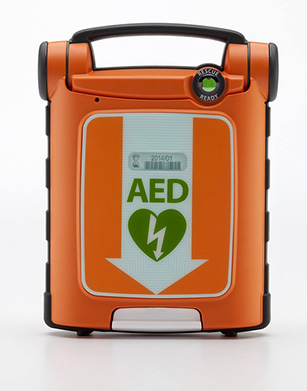5 Things You Need to Know About Creatine
Creatine has been misunderstood and seems to be categorized as “bro-science” or “big muscles.” Keep in mind that creatine is produced in the body and stored in the muscle, and 95 percent of the body’s creatine is stored in the muscle. Creatine does not produce big muscles or a stronger athlete itself, but it does allow for the athlete to train harder translating into strength and lean mass gains. For example, creatine monohydrate supplementation has been shown to improve resistance training performance and the performance of longer-duration exercise (>30s) and sprints embedded or at the end of endurance exercise.
Spoiler: You can’t sit on the couch and supplement with creatine and turn into the Incredible Hulk.
 Available studies illustrate that both short- and long-term creatine supplementation is well-tolerated, safe, and effective in healthy individuals ranging from infancy to the geriatric population. Provided robust research on creatine monohydrate, I would identify creatine as the Swiss army knife of ergogenic aids! I work with both high school male and female athletes that use creatine post-training. That’s right, it’s time to turn the corner so that our young athletes can compete at their strongest, healthiest selves with fewer injuries.
Available studies illustrate that both short- and long-term creatine supplementation is well-tolerated, safe, and effective in healthy individuals ranging from infancy to the geriatric population. Provided robust research on creatine monohydrate, I would identify creatine as the Swiss army knife of ergogenic aids! I work with both high school male and female athletes that use creatine post-training. That’s right, it’s time to turn the corner so that our young athletes can compete at their strongest, healthiest selves with fewer injuries.
Here are five things to know about creatine and that may dispel any common misconceptions. Please go read a recent blog that takes greater depth on this topic in a previous blog, ‘Should Youth Athletes Use Creatine?’
Creatine Is Not a Steroid
Creatine is a naturally occurring compound formed by three amino acids, making it a tripeptide of the amino acids L-glycine, L-arginine, and L-methionine. Creatine is assembled in a two-step process that occurs in the kidneys and liver. Ninety-five percent of creatine is found in skeletal muscle and the human body needs 1-3g per day. Most creatine in the diet comes from animal products like meat, fish, & poultry. Antonio et al., 2021 published a phenomenal paper outlining the common questions and misconceptions regarding creatine use available for open access here.
Both short and long-term supplementation (up to 30g/day for 5 years) is safe and well-tolerated in healthy individuals and in a number of patient populations ranging from infants to the elderly. Creatine can be safely supplemented with 3-5g daily post-training.
Creatine Reduces Muscle Cramping and Injury Risk
Contrary to popular belief, creatine does not cause cramping or dehydration. In fact, creatine reduces the risk of dehydration and muscular cramping. Creatine actually promotes hydration, reducing thermal stress during exercise in the heat, and even reduces injury risk. A study published in the Journal of Athletic Training carried out by Greenwood et al., 2003 assessed injury rates during a four-month American college football season with a creatine group (0.3g/kg/day for 5 days and non-users). The creatine group experienced less incidence of cramping, heat illness, dehydration, muscle tightness, muscle strains, non-contact injuries, and fewer missed practices than those not taking creatine.
Creatine supplementation results in less cramping, fewer muscle injuries, faster recovery following injury, and greater tolerance to stress in hot conditions and extreme temps.
Creatine Can Help Improve Athletic Performance
 Studies have demonstrated that creatine supplementation increases intramuscular creatine concentrations which lead to the following but not limited to:
Studies have demonstrated that creatine supplementation increases intramuscular creatine concentrations which lead to the following but not limited to:
- Increase in muscular strength and endurance
- Increased power output
- Increased lean muscle and total body mass
- Enhanced recovery and reduced muscle damage following intense exercise
- Enhanced tolerance to exercise in the heat
Creatine is safe, beneficial, and well-tolerated among youth athletes as evidenced by the available data. Some studies in youth athletes have shown:
- Creatine supplementation improved time performance and strength in highly competitive swimmers
- Youth soccer players experienced improved sprinting, vertical jump, dribbling, and shooting
- Creatine can support brain health, offering neuroprotective effects following a concussive injury in athletes <16 years old
Please read a previous blog that further explains the benefits of creatine for youth athletes.
Creatine Protects the Brain
The brain is one of the highest-cost muscles in the body. The brain uses roughly 20% of our kcal intake which means lack of oxygen or damage to this vital muscle can equate to loss of balance, control, a decline in motor skills, dysfunction, fatigue all of which can lead to injuries. Creatine can protect the brain from ischemic cell damage (due to a lack of oxygen) by inhibiting ATP (energy) depletion and mitigating structural damage to the affected brain cells.
» ALSO SEE: A.D.ministration — The AD and The ATC
Furthermore, concussions and injuries are high in contact sports, and creatine has been shown to mitigate cortical damage by 36-50%. A study published in the November issue of The Annals of Neurology found that rats who were fed a creatine diet for four weeks experienced a 50% reduction in brain damage when compared to rats on a normal diet. Concussions are not planned but what this incredible research tells us is that creatine can offer protective mechanisms by increasing energy production in the part of the brain responsible for generating ATP, (cells energy currency), which is the mitochondria.
How To Safely Use Creatine
Creatine monohydrate is the most effective and well-studied form. The exact dose of creatine needed to increase muscle creatine has not been concluded. However, most studies have identified an acute protocol involving (20g/d for five days), or a chronic protocol of (3-5g/d for 30 days) to fully saturate muscle creatine stores. Since muscle creatine is insulin-mediated, skeletal muscle uptake can be enhanced by co-ingesting carbohydrates and protein. For example, creatine in Greek yogurt with oats, berries. Mixing creatine in low-fat chocolate milk to further increase creatine uptake and maximize recovery. Research has found those with a lower muscle creatine store appear to have the greatest increase with supplementation. This is largely due to those consuming low amounts of animal protein, following a vegetarian or vegan diet. Roughly 3-5 grams of creatine post-resistance training can help athletes recover more efficiently following training, reduce onset fatigue, repair tissue damage, improve lean mass and also support brain health.
Please check out a previous blog that answers the question, should youth athletes use creatine?
Bottom Line
Creatine is like the Swiss army knife of supplements. The use and benefits of creatine are endless. It’s a low-cost, convenient way to support health, reduce the risk of injury, optimize recovery, and optimize athletic performance. Creatine should be in every athlete’s first aid kit.
Wendi Irlbeck, MS, RDN, CISSN, is a writer, sought-out speaker, entrepreneur, preceptor, mentor, and performance coach. Wendi utilizes evidence-based science to tailor nutrition programs for athletes to optimize performance, minimize health risks, and enhance recovery from training while focusing on injury prevention. She partners with parents, sports performance staff, and special needs and recreational athletes to offer nutritional guidance and optimal athletic performance lifestyle plans. Get in touch with Wendi to learn more: [email protected].





